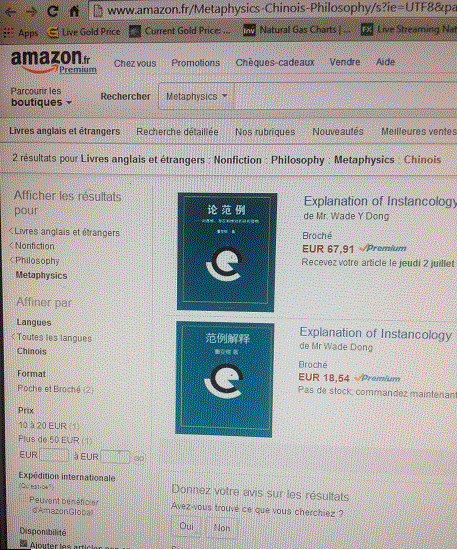Title: “Instancology and Chemistry
Title: “Instancology and Chemistry: The Ontology of Substance and Transformation”
1. Introduction
Chemistry studies the behavior and transformation of matter. At first glance, it seems purely empirical and physical. But beneath its surface lies a deep ontological question: What is substance? What is change? Instancology offers a unique lens through its 2x2 relational structure (AA, RA, AR, RR), allowing us to reframe chemistry not just as science, but as structured instance relationships involving matter, form, and law.
---
2. Chemistry as RR and AR Activities
From an Instancological view:
Chemical elements and compounds are AR instances: naturally occurring, spatial-temporal entities in the Macro World.
Human-created molecules, synthesis methods, symbolic notations (e.g., H?O, CH?) belong to RR: these are representations, results of human modeling, abstraction, and laboratory replication.
The act of observation, measurement, and symbolic manipulation in chemistry operates fully within the RR layer, grounded on the AR substrate (the material itself). This separation allows us to clarify when we are dealing with matter itself, and when we are dealing with our human representations of it.
---
3. Laws of Chemistry: RA Layer
Chemical reactions follow precise laws: conservation of mass, thermodynamic principles, periodicity, etc. These laws do not emerge from individual molecules but are issued as Whole truths from the RA layer. They are:
Universal
Timeless (though discovered in time)
Not composed from observed events, but governing them
Thus, the periodic law, for instance, is not constructed from elements—it governs them, much like how gravity governs planetary orbits. Chemistry, then, is not inductively building law from observation, but recognizing a RA law that was already true before any chemist existed.
---
4. On Substance and Transformation
Instancology highlights the error of thinking that transformation (e.g., combustion, synthesis) is a purely mechanistic event. Instead:
Each reaction is an Instance, a Whole formed through interaction, not a collection of steps.
The transition from reactants to products is a rebirth, not an addition of parts. This aligns with Instancology’s Rebirth Principle.
Molecules are not reducible to atomic parts in ontological terms: they are Wholes issued from deeper laws, not simply constructed from Lego-like atoms.
This opposes the standard reductionist idea and restores the concept of "substance" as formed by the law issuing instances, not from raw parts aggregation.
---
5. Instancological View of Chemical Innovation
Every major breakthrough in chemistry (like Mendeleev’s periodic table or the discovery of DNA structure) was not the result of mere data accumulation, but an act of Relative WuXing (RW): intuitive insight beyond reason. It reflected RA truths being glimpsed through human symbolic construction.
This reinforces that chemistry is not just an empirical science, but a field of ontological revelation, where Absolute truths shape relative observations.
---
6. Summary
Chemistry, through the Instancological lens, is a layered dance:
AR gives us the material reality of molecules and elements.
RR gives us the symbolic, modeled, and experimental framework.
RA gives us the immutable laws governing transformation.
AA remains the unnameable background that issues the entire universe—chemistry included—as a single Whole instance.
Understanding chemistry through Instancology doesn’t change the lab—it changes the mind behind the experiment. It restores reverence to matter, law, and the act of discovery.
